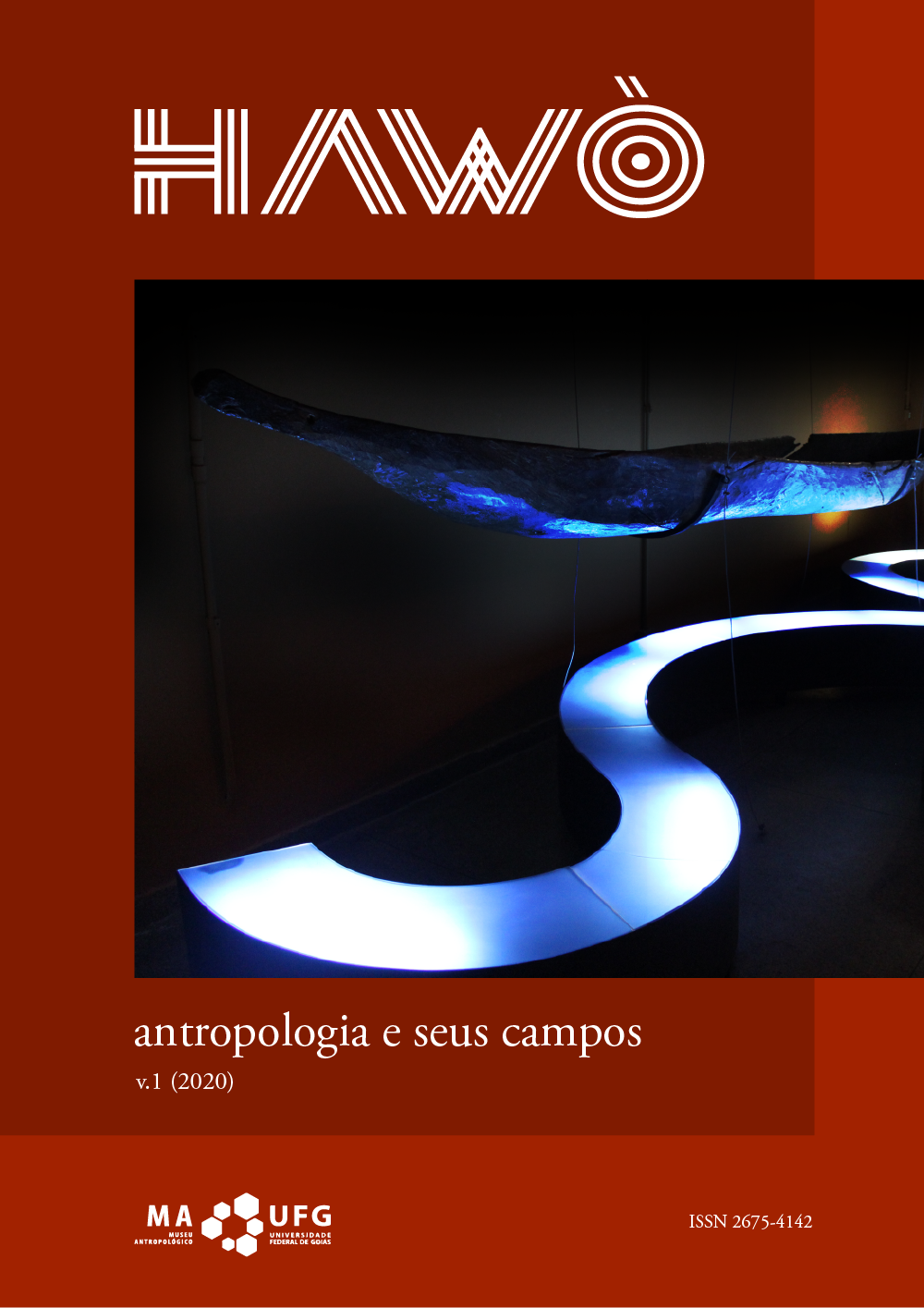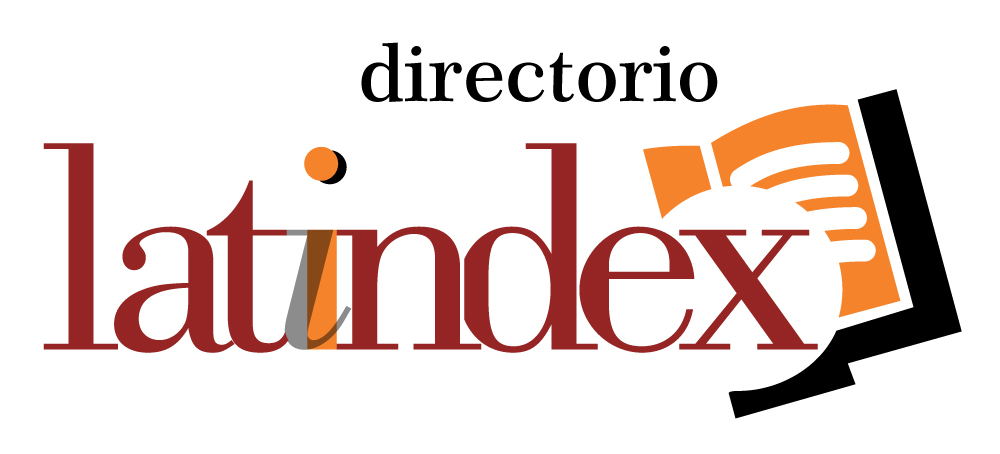Do que estamos falando quando falamos de música nos Andes?
Notas sobre as condições de existência e a fetichização da alteridade no estudo da música indígena dos Andes peruanos contemporâneos
Palavras-chave:
Andes, Peru, Música, Não humanos, AlteridadeResumo
A música nos Andes é parte integrante da vida das pessoas, das suas cosmologias, estéticas e do seu sentido de pertencimento a uma coletividade e de uma posição em contextos específicos. Os estudos dessa região também descrevem a música como uma força poderosa na criação e consolidação de alianças, capaz de atribuir uma “assinatura” local para cada grupo, atraindo estrangeiros para determinadas regiões. O objetivo deste artigo é discutir as concepções musicais indígenas e as práticas relacionadas à produção musical não humana, bem como a fetichização de sua alteridade radical em um cenário saturado pelo extrativismo nos Andes peruanos contemporâneos.
Referências
ARCE, M. Las wankas de Espinar (Perú). Cusco: Ministerio de Cultura, 2014.
ARGUEDAS, J. M. Dioses y hombres de Huarochirí. Lima: IEP, 1966.
ARNOLD, D.; YAPITA, J. de D. Río de vellón, río de canto. Cantar a los animales, una poética andina de la creación. La Paz: Instituto de Lengua y Cultura Aymara. 2018 [1998].
BAUMANN, M. P. Cosmología y música en los Andes. Madrid: Vervuert, 1996.
BAUMANN, M. P. Music and worldview of Indian societies in the Bolivian Andes. In: KUSS, M. (ed.). Music in Latin America and the Caribbean. Austin: University of Texas Press, 2004. p. 101-122.
BELLENGER, X. Les instruments de musique dans les pays andins (Equateur, Pérou, Bolivie). Bulletin de l'IFEA, 9(3-4), p. 107-149, 1980.
BELLENGER, X. An introduction to the history of musical instruments in the Andean countries. World of Music, 24(2), p. 38-51, 1982.
BELLENGER, X. El espacio musical andino. Modo ritualizado de producción musical en la isla de Taquile. Lima: IFEA, 2007.
BERNAND, C. Músicas mestizas, músicas populares, músicas latinas: gestación colonial, identidades republicanas y globalización. Co-herencia 6(11), p.87-106, 2009.
BESSIRE, L. Behold the black caiman: a chronicle of Ayoreo life. University of Chicago Press, 2014.
BIGENHO, M. Intimate distance: Andean music in Japan. Duke University Press, 2012.
BLASER, M. The threat of the Yrmo: the political ontology of a sustainable hunting program. American Anthropologist, 111(1), p. 10-20, 2009.
BOLAÑOS, C. Origen de la música en los Andes: instrumentos musicales, objetos sonoros y músicos de la Región Andina precolonial. Lima: Congreso del Perú, 2007.
BRABEC, B. About magical singing, sonic perspectives, ambient multinatures, and the conscious experience. Indiana, 29, p. 73-101, 2012.
BRABEC, B; LEWY, M.; GARCÍA, M. (Eds.). Introducción. In: Sudamérica y sus mundos audibles. Berlin: Indiana, 2015. p. 7-26.
BRIGHTMAN, M. The imbalance of power: leadership, masculinity and wealth in the Amazon. Oxford: Berghahn Books, 2016.
BUTTERWORTH, J. Rethinking spectacle and indigenous consumption: commercial huayno music in Peru. In: GILBERT, H.; GLEGHORN, C. (eds.). Recasting commodity and spectacle in the indigenous Americas. London: University of London, 2014. p. 131-149.
CANDEA, M. We Have Never Been Pluralist: On Lateral and Frontal Comparisons in the Ontological Turn. In: PIERRE CHARBONNIER, P.; SALMON, G.; SKAFISH, P. (eds.). Comparative Metaphysics. Ontology After Anthropology. Londres e Nova York: Rowman and Littlefield, 2017. p. 85-106.
CÁNEPA, G. Instrumentos y géneros musicales de Lambayeque. [DVD]. Lima: PUCP, 1991.
CHAUMEIL, J. P. Bones, flutes, and the dead: memory and funerary treatments in Amazonia. In: FAUSTO, C.; HECKENBERGER, M. (eds.). Time and memory in Indigenous Amazonia: anthropological perspectives. Gainesville: University Press of Florida, 2007. p. 243-283.
COHEN, J.; WISSLER, H. Q’eros. In: OLSEN; SHEEHY (eds.). The Garland handbook of Latin American music. New York: Routledge. 2007 [2000], p. 463-473.
DIAZ, L.; TOMÉ, P. La tradición como reclamo: antropología de Castilla y León. Valladolid: Junta de Castilla y León, 2007.
FAUSTO, C. Art Effects: Image, Agency, and Ritual in Amazonia. University of Nebraska Press, 2020.
GOSE, P. House rethatching in an Andean annual cycle: practice, meaning, and contradiction. American Ethnologist, 18(1), p. 39-66, 1991.
GRASSLER, J. M. Bolivie – charangos du Norte Potosí. Bulletin de la société suisse des Américanistes, 61, p. 39-44, 1997.
HILL, J.; CHAUMEIL, J. P. Burst of breath: Indigenous ritual wind instruments in lowland South America. Lincoln: University of Nebraska Pres, 2011.
HOLDBRAAD, M. Tres provocaciones ontológicas. Ankulegi. Revista de Antropología Social, 18, p. 127-39, 2014.
INSTITUTO NACIONAL DE CULTURA (INC). Mapa de los instrumentos musicales de uso popular en el Perú. Lima: INC, 1978.
IZIKOWITZ, K. G. Le tambour à membrane au Pérou. Journal de la Société des Américanistes, 23, p. 163-175, 1931.
IZIKOWITZ, K. G. Musical and other sound instruments of the South American Indians: a comparative ethnographical study. Göteborg: Wettergren, 1935.
JIMÉNEZ, Arturo. Instrumentos musicales del Perú. Lima: Museo de la Cultura, 1951.
LEWY, M. Más allá del “punto de vista”: sonorismo amerindio y entidades de sonido antropomorfas y no-antropomorfas. In: BRABEC, B; LEWY, M.; GARCÍA, M. (eds.). Sudamérica y sus mundos audibles. Berlin: Indiana, 2015. p. 83-98.
MARTÍNEZ, R. Musiques du désordre, musiques de l’ordre: le calendrier musical chez les Jalq’a (Bolivie). Tesis de doctorado en Etnomusicología, Universidad de Nanterre (París X), Laboratoire d'ethnologie et de sociologie comparative (LESC),1994.
MARTÍNEZ, R. Autour du geste musical andin. Cahiers d’ethnomusicologie, 14, p. 167-180, 2001.
MARTÍNEZ, R. Músicas, movimientos, colores en la fiesta andina. Anthropologica 32(33), p. 87-110, 2014.
McNETT, C. The chirimia: a Latin American shawm. The Galpin Society Journal, 13, p. 44-51, 1960.
MENDOZA, Z. Creating Our Own: Folklore, Performance, and Identity in Cuzco, Peru. Duke University Press, 2008.
MILLONES, L; TOMOEDA, H. Las sirenas de Sarhua. Letras, 75(107-108), p. 15-31, 2004.
MINISTERIO DE CULTURA. Chopccam kani. Lima: Ministerio de Cultura del Perú, 2014.
MONTOYA, R.; MONTOYA, L.; MONTOYA, E. La Sangre de los cerros: Takistin, tusustin tarpusunchik. Lima: UNFV, 1997 [1987].
OLSEN, D. Studying Latin American music. In: OLSEN, D.; SHEEHY, D. (eds.). The Garland handbook of Latin American Music. New York: Routledge, 2007a [2000], p. 13-35.
OLSEN, D. The Distribution, Symbolism, and Use of Musical Instruments. In: OLSEN, D.; SHEEHY, D. (eds.). The Garland handbook of Latin American Music. New York: Routledge, 2007b [2000]. p. 38-52.
OLSEN, D. The Music of South America. In: OLSEN, D.; SHEEHY, D. (eds.). The Garland handbook of Latin American Music. New York: Routledge, 2007c [2000]. p. 267-274.
OROBITG, G. Lamento ritual de las mujeres pumé. In: GUTIERREZ, M.; SURRALLÉS, A. (eds.). Retóricas de los sentimientos. Etnografías amerindias. Madrid: Iberoamericana, 2015. p. 125-152.
ORTIZ RESCANIÈRE, A. El individuo andino, autóctono y cosmopolita. In: PORTOCARRERO, G.; DEGREGORI, C. I. (eds.). Cultura y globalización. Lima: RED, 1999. p. 29-133.
OSSIO, J. Parentesco, reciprocidad y jerarquía en los Andes. Lima: PUCP, 1992.
OTTER, E. Music and dance of Indians and mestizos in an Andean valley of Peru. Delft: Eburon, 1985.
PAREJO-COUDERT, R. La flûte pinkuyllu des Provincias Altas du Cuzco (Pérou): organologie et symbolique érotique d’un aérophone andin. Journal de la société des américanistes, 87, 2001, p. 211-264.
PILCO, E. Musiciens, religion et société dans les Andes au XXe siècle (Pérou). Paris: L’Harmattan, 2012.
PUGLIESI, R.; GÓMEZ, J.; MARTÍNEZ, M. Danzan las aves: música, fiestas y rituales de Luya. Lima: Ministerio de Cultura, 2012.
QUIJADA, S. Canciones del ganado y pastores: 200 cantos quechua-español. Lima: P. L. Villanueva, 1957.
RIVERA ANDÍA, J. J. La fiesta del ganado en el valle del Chancay. Lima: PUCP, 2003.
RIVERA ANDÍA, J. J. Una flauta traversa tañida por interpretes femeninos en la sierra norte peruana. Estudios Latinoamericanos, 31, p.127-144, 2011.
RIVERA ANDÍA, J. J. Una organología tradicional de los Andes septentrionales peruanos. Anthropos, 108, p. 463-480, 2013.
RIVERA ANDÍA, J. J. El arte de hablar con los cerros: instrumentos musicales, entidades no humanas, cuerpos y géneros en los Andes. In: BRABEC, B.; LEWY, M.; GARCÍA, M. (eds.). Sudamérica y sus mundos audibles. Berlin: Indiana, 2015. p. 255-270.
RIVERA ANDÍA, J. J.; DÁVILA FRANCKE, A. Músicos en los Andes: testimonios y textos escritos de dos músicos del valle de Chancay (Sierra de Lima). Lima: PUCP, 2005.
ROBLES, R. La banda de músicos. Las bellas artes musicales en el sur de Ancash. Lima: UNMSM, 2000.
ROMERO, R. Música tradicional de Lambayeque. [CD]. Lima: PUCP, 1996.
ROMERO, R. Debating the Past: Music, Memory and Identity in the Andes. New York: Oxford University Press, 2001.
ROMERO, R. Peru. In: OLSEN, D.; SHEEHY, D. (eds.). The Garland handbook of Latin American Music. New York: Routledge, 2007 [2000]. p. 438-462.
ROMERO, R. Peru: Andean music of life, work, and celebration. Washington DC: Smithsonian Institution, 2013.
SÁNCHEZ, W. Algunas consideraciones hipotéticas sobre música y sistema de pensamiento. In: BAUMANN, M. P. (ed.) Cosmología y música en los Andes. Madrid: Vervuert, 1996. p. 83-102.
SEEGER, A. Musical genres and contexts. In: OLSEN, D.; SHEEHY, D. (eds.). The Garland handbook of Latin American Music. New York: Routledge, 2007 [2000]. p. 53-64.
SCHOER, H.; BRABEC, B.; LEWY, M. Towards an Auditory Anthropology. The Value of Human/Non-human Soundscapes and Cultural Soundscape Composition in Contemporary Research and Education on American Indigenous Cultures. Soundscape Journal, 3, p. 15-21, 2014.
SEVILLA EXEBIO, J. C. La fiesta de la Cruz de Penachi y la Danza rojo y blanco. Umbral. Revista de educación, cultura y sociedad, 5(9-10), p. 38-51, 2005.
STEVENSON, R. Music in Aztec and Inca territory. Berkeley: University of California Press, 1968.
STOBART, H. Flourishing horns and enchanted tubers: music and potatoes in highland Bolivia. British Journal of Ethnomusicology, 3, p. 35-48, 1994.
STOBART, H. The animated soundscape and the mountain’s bones. In: DRANSART, P. (ed.). Kay Pacha: cultivating earth and water in the Andes. Oxford: BAR, 2006. p. 99-106.
STOBART, H. Bolivia. In: OLSEN, D.; SHEEHY, D. (eds.). The Garland handbook of Latin American Music. New York: Routledge, 2007 [2000]. p. 417-437.
STOBART, H. In touch with the earth? Musical instruments, gender and fertility in the Bolivian Andes. Ethnomusicology Forum, 17(1), p. 67-94, 2008.
STOBART, H. Demonios, ensueños y deseos: tradiciones de las Sirenas y la creación. In: GERARD, A. (ed.). Diablos tentadores y pinkillus embriagadores. La Paz: Plural editores, 2010. p. 183-217.
STOBART, H. Constructing community in the digital home studio: carnival, creativity and indigenous music video production in the Bolivian Andes. Popular Music, 30(2), p. 209-226, 2011a.
STOBART, H. Review of “Music in the Andes: experiencing music, expressing culture” by T. Turino. Music and Letters, 92(2), p. 334-336, 2011b.
TELLO, J. C.; PRÓSPERO, M. Wallallo. Ceremonias gentilicias realizadas en la Región Cisandina del Perú Central. Revista Inca, 1(2), p. 475-549, 1923.
TURINO, T. The charango and the “sirena”: music, magic, and the power of love. Latin American Music Review, 4(1), p. 81-119, 1983.
TURINO, T. Local practices among the Aymara and Quechua in Conima and Canas, southern Peru. In: KUSS, M. (ed.). Music in Latin America and the Caribbean. Austin: University of Texas Press, 2004. p. 123-144.
VIVANCO, A. Una etnografía olvidada en los Andes: el Valle del Chancay (Perú) en 1963. Madrid: CSIC, 2012.
VIVEIROS DE CASTRO, E. The Relative Native: Essays on Indigenous Conceptual Worlds. Chicago: HAU Books and University of Chicago Press, 2015.
ULFE, M. Un ritual de matrimonio en Andahuaylas. Anthropologica, 15, p. 289-303, 1997.
WILMOTTE, M. H. La flûte traversière et le système Böhm: 200 ans d’histoire d’enjeux et d’enseignement. Tesis doctoral en Historia sustentada en la Universidad de Rouen, Ruan (Francia), GRHis (Groupe de Recherche d’Histoire), 2009.
YEP, V. Sin banda no hay fiesta. Música del Bajo Piura. Lima: Fondo Editorial de la Universidad de Lima, 2015.
Downloads
Publicado
Como Citar
Edição
Seção
Licença
Os(as) autor(es/as) que publicam na Revista Hawò são os responsáveis pelo conteúdo dos artigos assinados e detém os direitos autorais. Concedem à revista, o direito de primeira publicação com o trabalho simultaneamente licenciado sob a Licença Creative Commons Atribuição-Não Comercial (Open Archives Iniciative - OAI). Esse recurso, utilizado para periódicos de acesso aberto, permite o compartilhamento do trabalho para fins não comerciais com reconhecimento da autoria. Caso o texto venha a ser publicado posteriormente em outro veículo, o autor deverá informar que o mesmo foi originalmente publicado como artigo na revista Hawò. Assim sendo, ainda que a revista seja detentora da primeira publicação, é reservado aos autores o direito de publicar seus trabalhos em repositórios institucionais ou em suas páginas pessoais, mesmo que o processo editorial não tenha sido finalizado.
É reservado à revista, o direito de realizar alterações de ordem normativa, ortográfica e gramatical visando manter o padrão de língua, respeitando-se, porém, o estilo dos autores.






